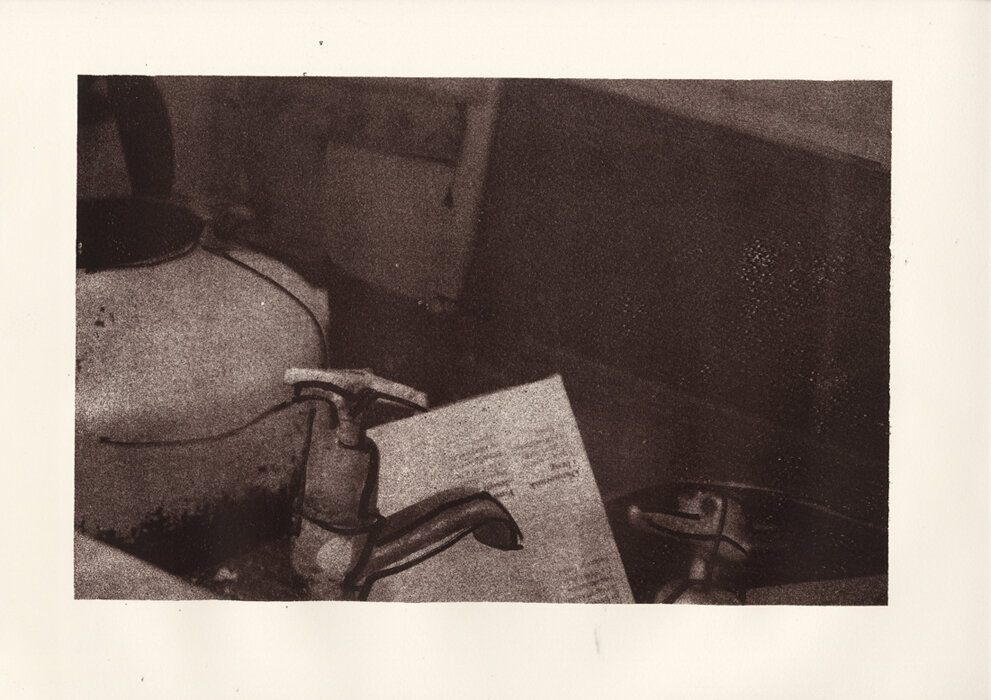Reframe









In one of Margo McNulty’s images, shadows leave blots of ink outside an open window with a crumpled curtain: it is not clear whether a cat has made its escape, or a phantom limb is casting a menancing presence. In a corner in another picture, an empty wastebasket is a victim of its own success, for it has now become waste. An empty chair made a similar wickerwork turns its back on the viewer, facing another version of itself, close-ups convey intimacy but may also be too close for comfort, as interiors become congested districts of loss. And what might have been. McNulty’s photo lithographs give the impression of surviving from the early days of photography, the spectral traces of the medium going against the grain. In other images, paint awaits a finishing touch as abandoned tins are left on the shelf, and this coatings peel off damp walls. Progress has come unstuck, discarded machines succumbing to rust and corrosion, extinct species once they no longer work. Objects that connected their uses to systems and grids – a tap, a light bulb, a dust-encrusted fan – seems out of place when deprived of human company. We cannot even recognize labour-saving devices that cannot save themselves, discarded by the very labour they almost made. Redundant.
A photograph only moves us, according to Roland Barthes, when ‘it takes the spectator outside the frame. And it is there that I animate the photograph, and that it animates me’. Just when we think we are looking at another photograph in Margo McNulty’s ‘remnants’. It comes alive in video form, as absent voices fill the air, and a bird intrudes on a derelict room, seemingly casing the joint for a new future. It soon gives up, however, and disappears from view, but the voices remain, out of shot, taking us outside the frame, wondering about all the histories that have become still-lifes, long before their time.
Luke Gibbons